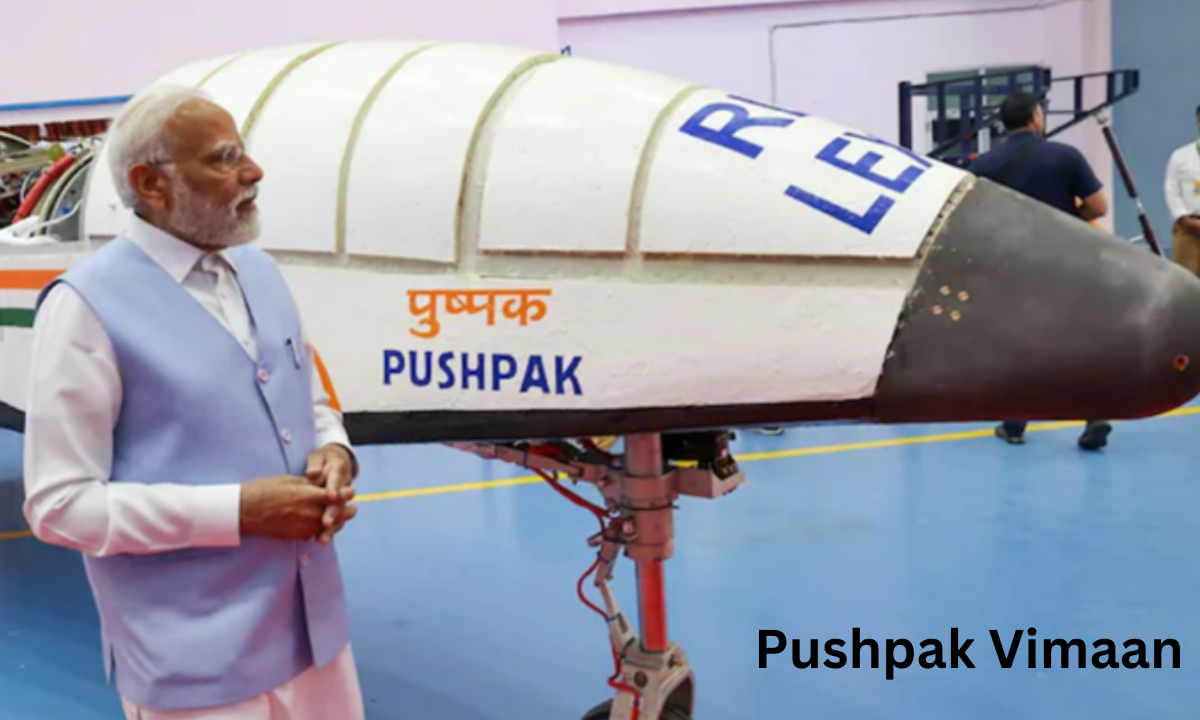On March 22, the Indian Space Research Organization (ISRO) will launch its Reusable Launch Vehicle, or “Pushpak,” on an experimental flight. Sometimes referred to as the “Swadeshi space shuttle,” the SUV-sized, winged rocket is scheduled to launch tomorrow at 7 am from the Chalakere Runway.
This is Pushpak’s third flight in an experiment to evaluate its robotic landing capability under more challenging conditions. “India’s audacious endeavor to render space travel most reasonably priced is demonstrated by the Pushpak launch vehicle,” stated S. Somanath, Chairman of the Indian Space Research Organization (ISRO).
What is ‘Pushpak Vimaan’ ?
The flowery chariot is called Pushpak Vimana. The Ramayana gave mention of this flying contraption. The Hindu epics make reference to it as the earliest flying vessel in history. Vishwakarma is credited with creating the Pushpak viman at the beginning. He constructed this flying aircraft for Brahma; he was the gods’ architect. High in the sky and between the clouds would
What Makes It Called Pushpak?
As per Somanath, the Ramayan namesake of India’s fabled spaceship “Pushpak Viman” is believed to be the vehicle of God Kuber, the Lord of Wealth. Thus, it is fitting to refer to Pushpak as India’s most daring 21st-century rocket.
“It is expected that in times to come, it could be a money spinner for India when it becomes a commercially available launcher.”
“Pushpak is the way of the future,” declared Sunil P, the Program Director of the Vikram Sarabhai Space Center’s Advanced Technology & Systems Group. “ISRO has an objective to fly a vehicle that is more cost-effective and provides very low-cost access to space,” he stated.
soar the Pushpak viman. This type of flying vehicle was unheard of in the world at the time. Kailash, the moon, hell, and heaven may all be reached with the Pushpak viman. Whatever you named it, it would lead you there.
Initial Examination
Using a simulated runway in the Bay of Bengal, the RLV made a successful landing during its first test in 2016. Never found again, it sank into the ocean.
The defense establishment’s Chitradurga Aeronautical Test Range successfully completed a second test in April 2023. The Indian Air Force (IAF) used a Chinook helicopter to launch the winged rocket, known as the RLV-LEX, into the air. It then dropped to land autonomously, which was successful.
When Prime Minister Narendra Modi visited the Vikram Sarabhai Space Centre last month, S Somnath, the head of Isro, gave him a briefing on the vehicle’s development.
- ISRO Commitment
About fifteen years ago, when India considered creating its own space shuttle, Pushpak was designed. About ten years ago, a committed group of scientists and engineers began working together to make Pushpak a reality.
The National Review Committee approved ISRO’s design of the RLV spacecraft in January 2012. Following approval, the first prototype was constructed and given the name RLV-TD (Technology Demonstrator).
- What’s Unique?
- Weighing 1.75 tons, Pushpak is a 6.5-meter spacecraft that resembles an airplane. An IAF helicopter will hoist it aboard.
- Small thrusters will assist the vehicle in navigating to the precise landing location during the descent.
Over Rs 100 crore has been invested in the project by the government. - The effort is being undertaken as the nation works toward building the Bhartiya Antariksha Station, its own space station, by 2035.
- Its reusability will drastically cut the price of space exploration.

